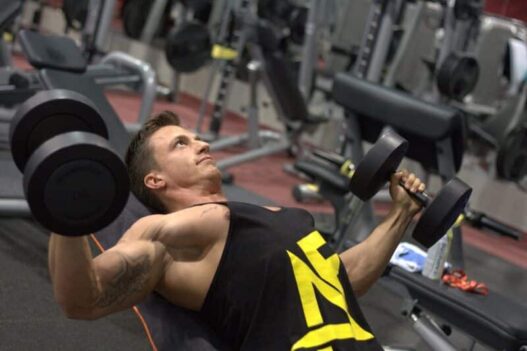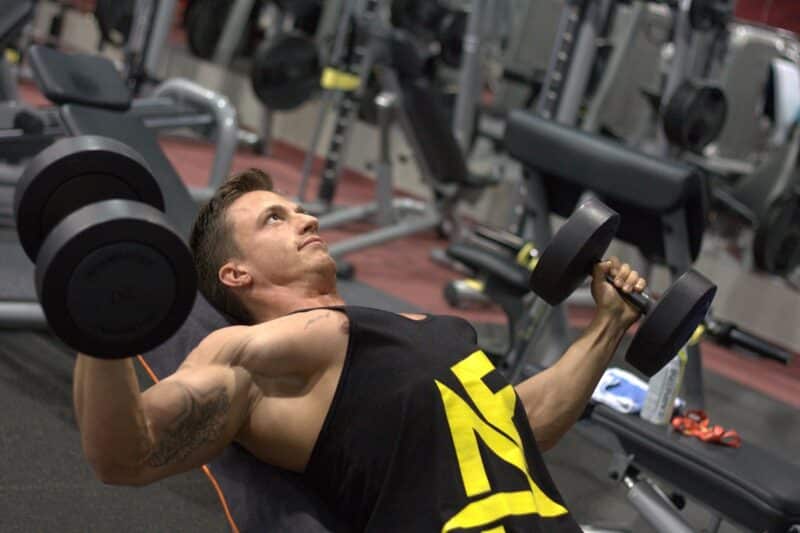Base Training
What is base training? Here is the guidance on base training and a few exercises for muscular strength and endurance including the Dumbbell Goblet Squat, Dumbbell Row, Donkey Kicks, Single leg deadlift, Waist training exercises, Russian twist, and more by Strength and Conditioning Specialist.
Base training has been a common form of training for many years. It helps develop a foundation for quality training and also helps prevent injury. Just like a building has a strong foundation to hold itself from collapsing, implementing this type of routine would be very beneficial and that is why it should be incorporated into one’s training regimen.
During this routine, it is recommended to implement the Functional Movement Screen or something similar to the athletes that you are working with. The reason why this is important is that we identify the areas that need to be addressed (i.e. mobility, stability, postural issues). These issue needs to be included in one’s training routine so this way it helps the athlete move more efficiently and prevent injury.
Base training exercises are usually low impact and during this phase, we will normally address stabilization and strength endurance exercises in one’s program. We can also implement moderate to heavy strength routines (70 to 85 percent of 1RM) to as well after the stabilization/ strength endurance phase of the program.
The following are exercises are an example of the stabilization/ strength endurance phase of the program:
Base Training Stabilization Exercises
1) Planks
2) Bridges (long or short lever)
3) Hollow Body Hold
4) Side Plank
5) Bird Dog
Base Training Strength & Endurance Exercises
1) Plank to Push-Up
2) Bridge to March
3) Mountain Climbers
4) Russian Twists
5) Single Leg Bridge with Hip Abduction
6) Pigeon Hip Extensions
7) Donkey Kicks
8) Adductor Slide Lunges
9) Hip Hikes
10) Single Leg Heel Drops
Base Training Moderate/ Heavy Strength Phase
1) Goblet Squats
2) Eccentric/Concentric Single Leg Split Squat
Note: To perform this drill stand on one leg while the rear foot should be placed on a bench or a step behind you. As you advance in this exercise you can lower the bench or perform this session on the floor. Lower yourself during the squat until the hip of the squatting (support) leg is on a level with the knee for three seconds and straighten the leg in an explosive manner for one second.
3) Forward/Backward Lunges
4) Deadlifts
5) Single Leg Romanian Deadlift (RDL)
6) Dumbbell Bench Press
7) Dumbbell Rows
8) Face Pulls
9) Weighted Pull-Ups/ Chin Ups
10) Farmer Walks or Suitcase Carries
Base Training Mobility Routine
During the base training phase, it is also recommended to work on a mobility routine, the following exercises are a suggested dynamic warm-up:
1) Heel Walking
2) Toe Walking
3) Marches
4) Hip Swings
5) Lunges (emphasizing heel recovery (i.e. bringing heel to towards one’s glutes)
6) Skipping
7) Single Leg Hopping
8) Hip Drive Drill
9) Scissors (Straight Legged Bounds)
10) Flying Runs
We can also determine what an athlete needs during his or her base training program. For example, athletes such as sprinters, basketball players, etc. would work on technique and sport-specific drills during this period. They would also perform speed endurance workouts on the grass or on the track. These workouts would usually involve about a 1:1 or 1:2 work-to-rest ratio in between.
Here is an example of such workouts:
1) 30 seconds of running @ about 60 percent effort with a 30-sec recovery in between
2) 1200 m tempo with about a 3 min recovery in between followed by 6*400m slower than one’s best 400m speed with about a 2 min recovery in between.
Short hill sprints should be also incorporated into this phase of the program. The length of the hills should be at least about 60 to 200 meters in length. This would allow the athlete to develop power and a rate of force production which is crucial for sprinting and other high-powered sports as well. The hill sessions should be combined as an uphill/ downhill circuit. For example, the uphill circuit is utilized for strength, and power, and will also help strengthen the glutes to as well. Whereas the downhill sprints would also help with leg turnover which is crucial for optimal speed development.
Other Areas Of Focus For Endurance Athletes Base Training
Endurance athletes would follow a similar routine except their emphasis will be placed on increased mileage and less on the intensity of these quality sessions. We cannot determine what the optimal mileage is for endurance athletes, most coaches would usually look at the experience and the previous training for each individual before making such a determination.
It is noted during this phase that nutrition and sleep play a vital role in one’s aerobic base training program. It is important that the endurance athlete focuses on quality nutrition such as fruits and vegetables with a high emphasis on vitamin C, potassium, vitamin E, and D.
Also, they should be focusing on foods with high-quality protein such as chicken, fish, eggs, beans, nuts, etc. It is also recommended that hydration and sleep should be important during one’s endurance base training program. It is noted that eight to ten glasses of water a day is crucial to maintain one’s hydration levels and also eight to ten-hour of sleep is optimal during this phase of the program.
In terms of increasing mileage, it is recommended that these athletes follow a cycle period. The example is as follows:
1) Week One: 30 MPW
2) Week Two: 35 MPW
3) Week Three: 40 MPW
4) Week Four: 30 MPW.
As you can see from the schedule above the endurance mileage is progressed gradually over time while incorporating recovery weeks. Following this routine will allow the adaptation of increased V02 Max, increased mitochondrial density, and improved stroke volume. These characteristics will help endurance athletes improve their performance in the upcoming racing season.
Conclusion
In conclusion, implementing a base training program for any sport would not only build a foundation for the athlete’s upcoming season but will also help prevent injury. By incorporating a base training program into your routine, you will also improve your athletic performance.
Also, do subscribe to www.healthieyoo.com for more fitness and workout tips.

Venkat Reddy is a NASM certified personal trainer, Certified Strength and Conditioning Specialist (CSCS) through the NSCA and a Functional Movement Screen Specialist who is based in the New York Metropolitan Area, United States











